I’ve been wondering why on Anzac Day we celebrate a failed attempt tp invade another country. Australians did show great valor and bravery, as they did three years later to the day in 1918 Australians in the Second Battle of Villers-Bretonneux:
-
After the Anzac Day counter-attack, British and French commanders lavished praise upon the Australians. Brigadier-General George Grogan, a witness, later wrote that it was “perhaps the greatest individual feat of the war” for troops to attack at night, across unfamiliar ground, at short notice and with no artillery preparation.[32][3]
These factors had proved essential to the Australian success.[9] Foch spoke of their “astonishing valiance [sic]…” and General Sir Henry Rawlinson attributed the safety of Amiens to the “…determination, tenacity and valour of the Australian Corps”.
It was a joint allied effort, as the casualties show:
-
The fighting around Villers-Bretonneux in April resulted in the following Allied casualties: the Australian brigades had taken 2,473 casualties, British casualties were 9,529 and French losses were c. 3,500. German losses were 8,000–10,400 men.
However, the Australians are remembered with particular affection:
- The school in Villers-Bretonneux was rebuilt using donations from school children of Victoria, Australia (many of whom had relatives perish in the town’s liberation) and above every blackboard is the inscription, “N’oublions jamais l’Australie” (Let us never forget Australia).
Villers-Bretonneux is the sister city of Robinvale, Victoria, Australia.
When some of my relatives visited the area in 2015 my sister-in-law took this photo:
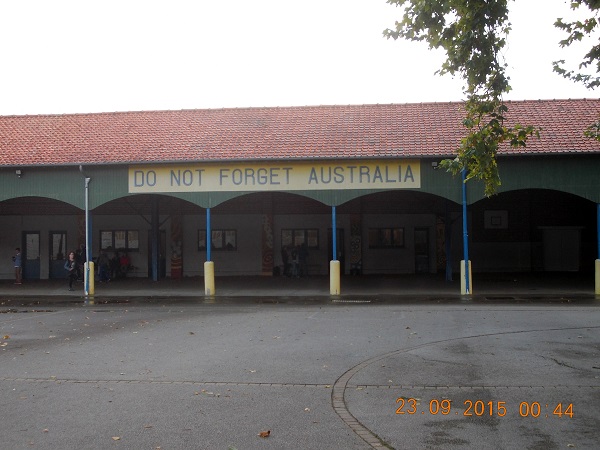
The significance of Villers-Bretonneux was that it is a town on the high ground to the south of the Somme River only 16 kilometres to the east of Amiens, which was of great tactical value as a railhead. The fall of Amiens would have split the English and the French to the north and south and opened up Paris and Calais to the Germans. So it marked a critical turning point in the war.
As this SMH article explains, there were just a few hours preparation, the plans involved long marches, there was little time for reconnaissance and their men were attacking at night with no artillery support.
Then:
- In the weeks after Villers-Bretonneux, Lieutenant General Sir John Monash became commander of the Australian Corps and led the Australians in their most successful actions of the war at Hamel, the battle of Amiens (fought east of Villers-Bretonneux), Mont St Quentin, Péronne and the breaking of the Hindenburg Line.
It was in these actions that the Australians achieved great victories, although at great cost, in the final months of the war. Villers-Bretonneux rightfully deserves historical attention, but without the romantic hyperbole and sentimentality that overstates the Australian contribution to the outcome of the Great War.
I understand that since 2008 there have been memorial ceremonies at Villers-Bretonneux. This year being the centenary we had the PM Malcolm Turnbull presiding at a crowd some 9,000 to open the $100 million Sir John Monash Centre. It has its own website which tells us it was commissioned in 2006, which was when John Howard was PM.
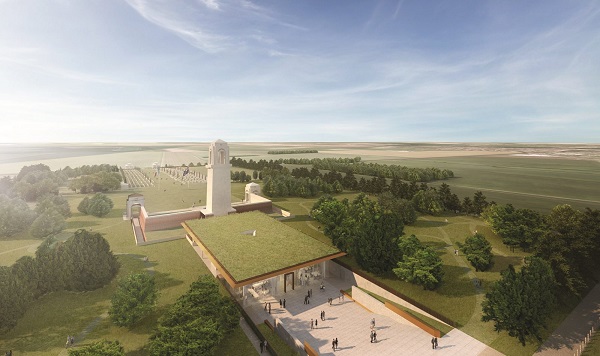
Which brings me to Peter Greste’s fascinating documentary Monash and Me. Part 1 was on Tuesday 24 April – thoroughly recommended. Greste says Monash revolutionised warfare, being the first to use synchronised attach with air, tanks, artillery and infantry.
I did know Monash was Jewish, but it had not occurred to me that he was of German origin, from the Prussian province of Posen:
-
Monash was born in Dudley Street,[2] West Melbourne, Victoria, on 27 June 1865, the son of Louis Monash and his wife Bertha, née Manasse.[3] He was born to Jewish parents, both from Krotoschin, in the Posen province, Kingdom of Prussia (now Krotoszyn in the Greater Poland Voivodeship, Poland); the family name was originally spelt Monasch (pronounced with the emphasis on the second syllable).[4] The family spoke German as their native language.[5] As might have been expected from a man brought up by cultivated German parents who had arrived in Australia barely two years before John’s birth, Monash spoke, read, and wrote German fluently. However, from 1914 until his death, Sir John Monash had no good reason to attract attention to his German background.[6]
I don’t know why that should cause such a stir. Germanic tribes that came out of the north from the beginning of the common era include the Angles, Saxons, Jutes, Vikings, Normans, Goths, Ostrogoths, Visigoths, Vandals, Franks, Burgundians, Allemanni and Lombards. Might have missed a few.
Greste says one of Monash’s advantages was that he understood the Germans.
Many of the above German tribes would not now identify as Germans. In the sweep of history Germans spread throughout continental Europe, indeed to northern Africa. Indeed the House of Windsor only dates from 1917, when George V found it politic to change the name from Saxe-Coburg-Gotha. This map shows the incursions into the Roman Empire in the first five centuries of the common era:
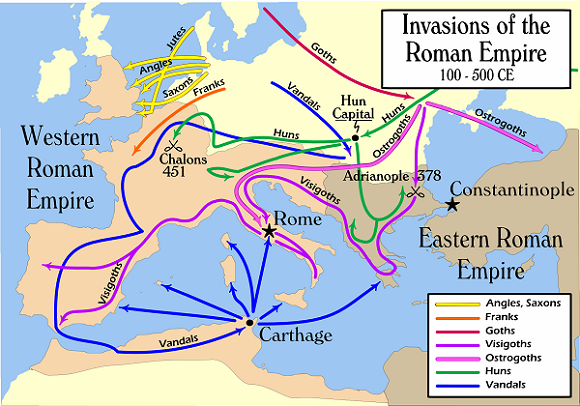
During the 12th and 13th centuries there was a ‘Drang nach Osten’, where a northern and southern arms extended into Poland:

Politically, however, Germany, while central in Europe was highly fragmented. This is the map of Europe in 1789, before the French Revolution, showing some 360 German states, cities and principalities:
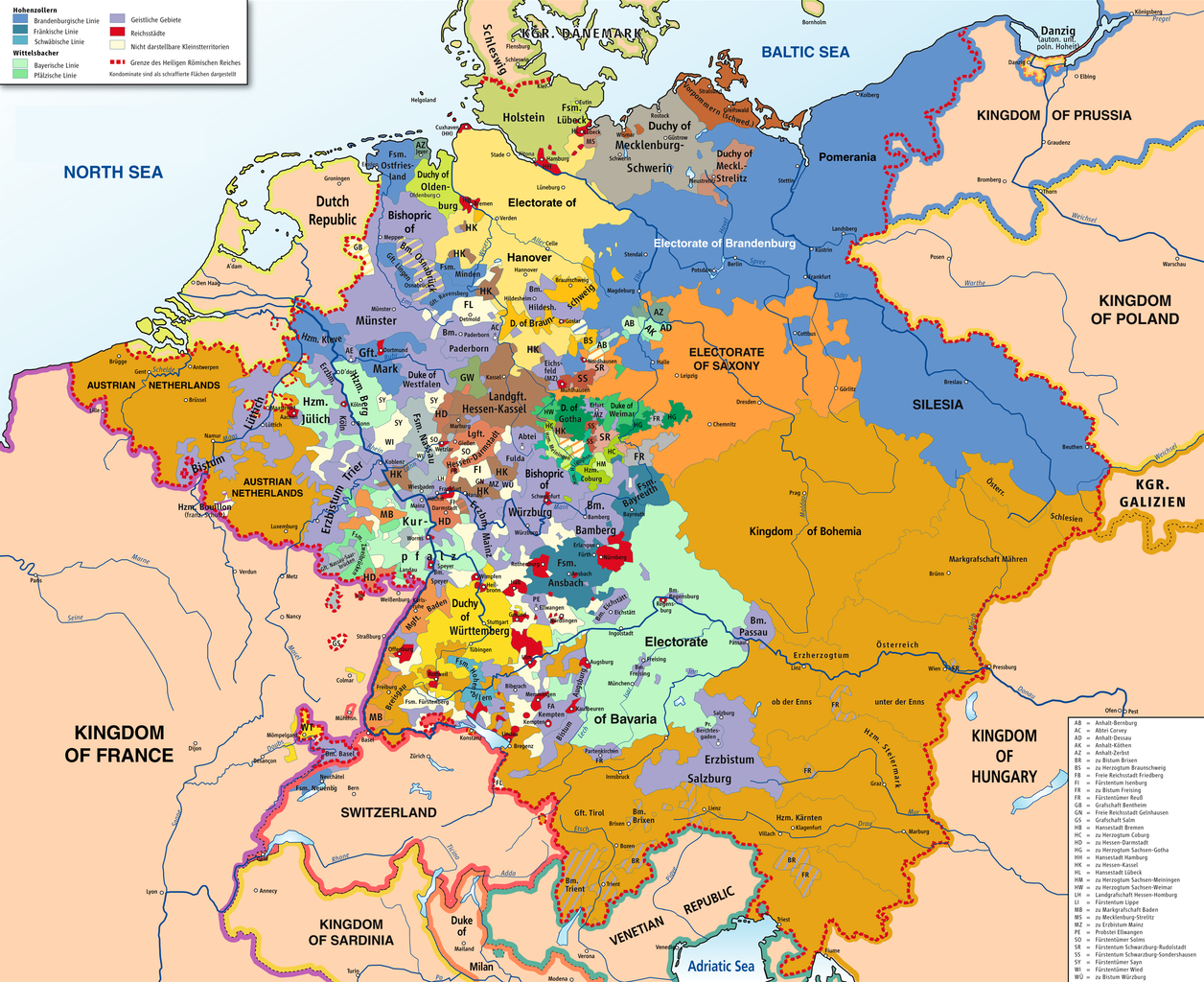
Napoleon and the settlement after the Napoleonic wars tidies the place up somewhat to this:
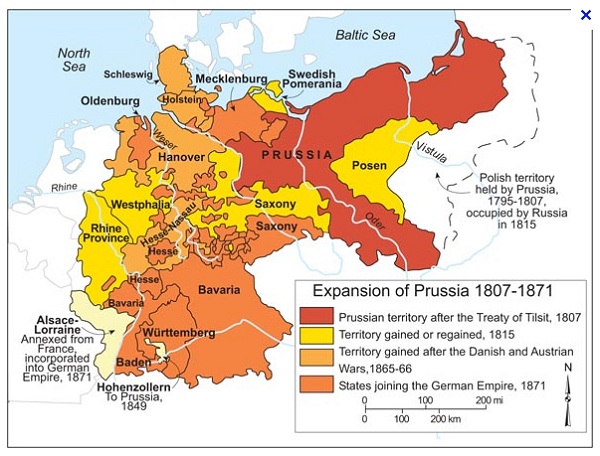
Of Monash we are told:
-
Several generations of John’s paternal ancestors had lived at Krotoschin (Krotoszyn), Posen province (Poznan, Poland), Prussia, near Breslau (Wroclaw).
Krotoschin is bottom right in the province of Posen. In that area Germans were a significant minority, largely confined to the towns. This language map from 1929 shows the dots in that part of the region:
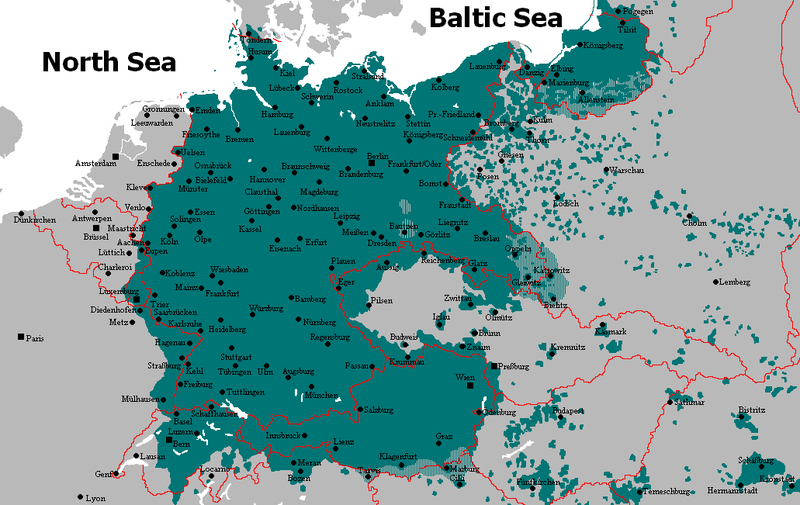
My great gandfather on my father’s side came from near Leignitz in Silesia, near Krotoschin, a bit to the west. My great-grandmother was actually Polish and came from Posen a bit to the north.
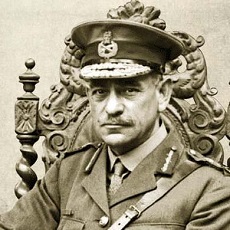 One of Germany’s problems was that physically it had no containing boundaries. Even in the Alps its populations melded into the surrounding peoples in Austria, Switzerland and Tyrol. Monash came from the eastern extremity and probably understood this. I’m sure he would have understood also that there is great ethnic and cultural variety within the ‘German’ population.
One of Germany’s problems was that physically it had no containing boundaries. Even in the Alps its populations melded into the surrounding peoples in Austria, Switzerland and Tyrol. Monash came from the eastern extremity and probably understood this. I’m sure he would have understood also that there is great ethnic and cultural variety within the ‘German’ population.
It seems Monash’s heritage was German as much as Jewish, he spoke proficient German, but never learnt Yiddish:
-
His parents had largely abandoned religious practice, but John sang in the choir at the East Melbourne synagogue and celebrated his bar mitzvah there. His mother attracted a wide circle of friends to her Richmond home; they were musical, German or Jewish but included the Deakin and Hodgson families.
Monash was super bright, well-connected but not wealthy, attending Scotch College. During WW1 Germans were largely demonised. Monash would have understood that they were humans like us and never underestimated them.
This has strayed a bit from Anzac, but the First World War was in large part sorting out the demise if the Ottoman Empire, and in large part resolving the age-old ‘German question’ within Europe. Germany lost about a third of its territory in WW 1 and a further third in WW 2.
Eric Hobsbawm said that the twentieth century may have been better if Germany had won the war. However, Europe would then have been seriously imbalanced. Essentially the German problem has been resolved in the sense that the boundaries have been established and whatever becomes of the EU, two thousand years of wars and violence have come to an end.
Australia played a vital part in this and it is appropriate that the focus move there rather than a pointless scrap on the fringe.
Update: I have put the Villers Bretonneaux Coat of Arms as the featured image, and inserted a photo of Monash.
I should perhaps have said something about the territorial losses of Germany after WW 1. This is the map:
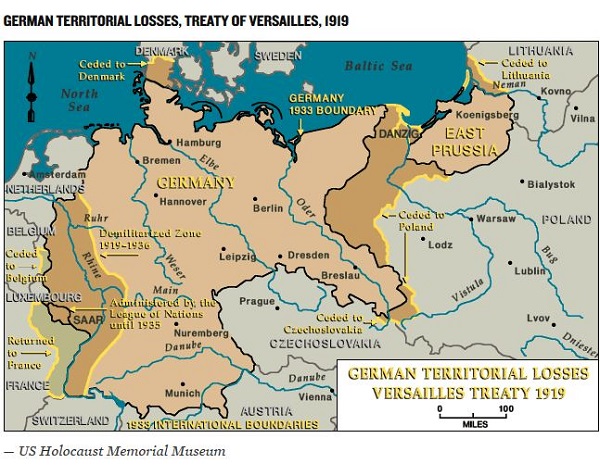
Essentially there was a slice off east and west. In the east Poland had been partitioned out of existence by Russia, Austria and Prussia in 1795. Poland was re-established in 1919 and some areas where the polulation was solidly German came under Polish administration.
After the Second World War further territory was lost, and the flight and expulsion of Germans reached epic proportions:
- After WWII ended about 11 million to 12 million[71][72][73] Germans fled or were expelled from Germany’s former eastern provinces or migrated from other countries to what remained of Germany, the largest transfer of a single European population in modern history.[71][72] Estimates of the total number of dead range from 500,000 to 2,000,000, where the higher figures include “unsolved cases” of persons reported as missing and presumed dead. Many German civilians were sent to internment and labor camps, where they died. Rummel estimated that 1,585,000 Germans were killed in Poland and 197,000 were killed in Czechoslovakia.
That excerpt is from an article Anti_German sentiment, which was considerable during and after the First World War.

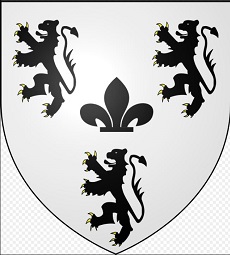
Apparently there was enormous anti-German feeling in Australia from 1914 at least. So Monash’s caution was understandable.
In the Melbourne suburb of Heidelberg, named after a German town, two streets carrying German names were renamed “Devon” and “Durham”. But “Carlsberg” survived and you still hear of “The Heidelberg School” of painters. The suburb retains its German name.
In Guardian Australia David Marr claims Sir Keith Murdoch wanted Monash sacked. After all, he was a ‘Jewish upstart’.
The French PM gave a magnificent speech at the Centre opening. I recommend it to anyone who might think Anzac commemorations “glorify war”.
In effect, it sounds as though Monash invented blitzkrieg. Shame that the poms were too arrogant to take notice and left it to the Germans to use at the start of WWII.
Ambi, the program said Billy Hughes went to England with the express purpose of sacking Monash, but was convinced when he saw his plans.
Anti-German sentiment was everywhere. Some may have thought the Germans brutal and stupid, but not Monash. Apparently he understood that losing soldiers was part of the exercise. What mattered was winning.
I’ve done an update:
Update: I have put the Villers Bretonneaux Coat of Arms as the featured image, and inserted a photo of Monash.
I should perhaps have said something about the territorial losses of Germany after WW 1. This is the map:
Essentially there was a slice off east and west. In the east Poland had been partitioned out of existence by Russia, Austria and Prussia in 1795. Poland was re-established in 1919 and some areas where the polulation was solidly German came under Polish administration.
After the Second World War further territory was lost, and the flight and expulsion of Germans reached epic proportions:
After WWII ended about 11 million to 12 million[71][72][73] Germans fled or were expelled from Germany’s former eastern provinces or migrated from other countries to what remained of Germany, the largest transfer of a single European population in modern history.[71][72] Estimates of the total number of dead range from 500,000 to 2,000,000, where the higher figures include “unsolved cases” of persons reported as missing and presumed dead. Many German civilians were sent to internment and labor camps, where they died. Rummel estimated that 1,585,000 Germans were killed in Poland and 197,000 were killed in Czechoslovakia.
That excerpt is from an article Anti_German sentiment, which was considerable during and after the First World War.
What terrible devastation the primacy of Herr Schickelgruber led to; his victims including millions of “his own” people. War is an absolute bastard, eh?
There is a horrible book, “The Killing Lands” about those parts east of Prussia and west of Moscow, blood-soaked as Schickelgruber and his ally/enemy Djugashvili sent their armies across foreign countries during WW2. Totalitarianism is an absolute bastard, eh?
An old proverb: When the elephants fight, the ants should watch out; when the elephants make love, the ants should be careful.
BTW
The re-naming of a couple of streets in a Melbourne suburb was a minuscule effect….. scarcely important, only emblematic.
Auf wiedersehen.
Timothy D. Snyder, Bloodlands: Europe Between Hitler and Stalin, Basic Books, 2010.
From Wikipedia:
In the book, Snyder examines the political, cultural and ideological context tied to a specific area of land, under which Joseph Stalin’s Soviet Union and Adolf Hitler’s Nazi Germany committed mass killing of an estimated 14 million non-combatants between the years 1933 and 1945, the majority outside the death camps of the Holocaust. Snyder’s thesis is that the “bloodlands”, a region which comprised what is modern-day Poland, Ukraine, Belarus, Russia and the Baltic states, is the area where the regimes of Stalin and Hitler, despite their conflicting goals, interacted to increase suffering and bloodshed many times worse than any seen in western history.
Thanks for your insightful article, Brian.
Ambi, that was a shocker, but the Russian Revolution was also bad. In terms of percentage loss of population, the Thirty Years War was bad in places, with Württemberg losing three-quarters of its population and Brandenburg half.
But as for wars, go to List of wars by death toll and take your pick. The Mongols, ancient Chinese and Spaniards impress.
Graham, thanks, it was a pleasure.
Brian at 10.52pm
Your
* impress *
is worthy of Dean Swift.
Well done.